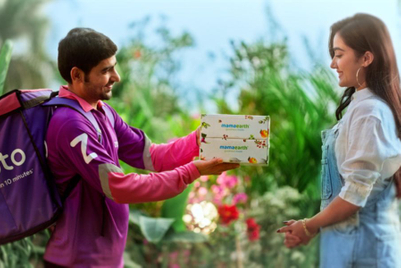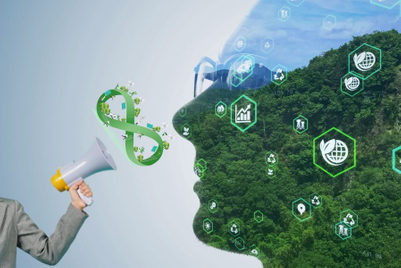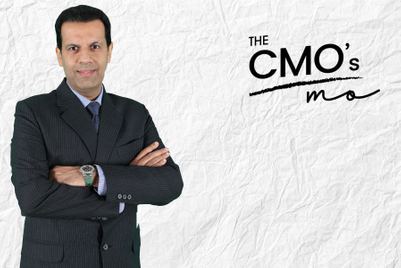.jpg&h=570&w=855&q=100&v=20250320&c=1)
As India strides confidently into 2025, one thing is very apparent; the habits of its consumers has evolved exponentially. This has been driven by global influences, cultural shifts, and technological advancements.
This consumption pattern is witnessing a rapid transformation and the consumer base has expanded beyond metro cities. Small towns and rural areas are seeing a rise in purchasing power.
With rural consumption steadily on the rise, the urban-rural gap in the monthly per capita consumption expenditure (MPCE) declined to 70% in 2023-24 from 84% in 2011-12, according to the household consumption survey results released in December 2024 by the Ministry of Statistics, Government of India.
As rural and urban areas converge, it has given the traditional market dynamics a new meaning.
At the same time, the influence of millennials and Gen Z is reshaping how brands connect with consumers. It is more important to these younger consumers to know what the brand stands for than the product itself. They gravitate towards companies that share their beliefs, respect genuineness, and do not hesitate to use their imagination.
Nowadays, customers demand an extremely personalised experience that fits their unique requirements, interests, and preferences. As 2025 progresses, personalisation in advertising will be an expectation rather than a differentiation. Thankfully, brands can provide these experiences at scale because of the penetration of AI and data analytics.
Sophisticated algorithms can allow for real-time analysis of consumer behaviour. Such analysis can enable the creation of communications that each person finds particularly relevant. However, holding on to customer trust will depend on finding a balance between privacy and personalisation.
Consumers do not differentiate between offline and online experiences and expect its seamless integration across channels today. It is important that in 2025, advertisers adopt an omnichannel approach that combines physical and digital modes of advertising.
Emerging technologies like wearables, the Internet of Things (IoT), and augmented reality (AR) can enhance this integration, creating immersive consumer experience journeys. For example, phygital ads, which offer distinctive and memorable interactions by enhancing physical experiences with digital components, are growing in popularity.
Trust, authenticity, and sustainability
In a world inundated with content, trust has become the currency of successful advertising. Consumers demand transparency, ethical practices, and value-driven communication from brands. Storytelling that emotionally resonates is a powerful tool to build this trust.
Authentic narratives showcasing a brand’s purpose, coupled with clear and honest messaging, will be essential to winning consumer loyalty. The era of flashy but hollow advertising is fading, making way for meaningful connections.
The next important aspect is sustainability. Being environmentally conscious is no longer a niche; It has become mainstream and is followed by millions if not billions of people. Brands that emphasise sustainability and exhibit a sincere dedication to environmental responsibility are becoming more and more popular with consumers.
This change must be reflected in advertising and should emphasise real sustainability projects above showy gestures or greenwashing. Ads that emphasise a company’s observable benefits to environmental health are likely to be appreciated by discerning consumers.
Interactive and short-form content
By creating interesting, bite-sized content that quickly grabs attention, advertisers can capitalise on the fact that short-form content platforms will dominate consumer attention spans in 2025. To illustrate, according to a Redseer report, the short-format video platforms in India (such as YouTube Shorts, Instagram, Snapchat, Twitch, Moj, Josh, etc.) clocked a 3.6x increase in daily active users, establishing itself as a mainstream entertainment category.
Short format video platforms today engage close to 25 crore users and rake in approximately over $200 million in revenues (approximately INR 1,688 crores, approximately) every month.
Furthermore, interactive campaigns and gamification will offer opportunities for greater engagement by motivating users to actively engage rather than only consume content.
The Indian consumer in 2025 will be a blend of digitally empowered, culturally rooted, and value-driven.
For advertisers, this will present a unique opportunity to innovate while staying true to core values. By embracing personalisation, leveraging technology, maintaining authenticity, and respecting regional nuances, brands can craft impactful campaigns that resonate with the modern Indian audience.
The advertising industry’s future lies in creating meaningful, tech-integrated, and consumer-centric experiences. In this dynamic landscape, brands that adapt and evolve with the times will emerge as leaders, setting new benchmarks for creativity and connection.

- Vaibhav Pandit, founder and creative director, Adbhoot Creatives.


.jpg&h=334&w=500&q=100&v=20250320&c=1)
.jpg&h=334&w=500&q=100&v=20250320&c=1)


.jpg&h=334&w=500&q=100&v=20250320&c=1)

.jpg&h=334&w=500&q=100&v=20250320&c=1)


.jpg&h=334&w=500&q=100&v=20250320&c=1)


.jpg&h=268&w=401&q=100&v=20250320&c=1)

.jpg&h=268&w=401&q=100&v=20250320&c=1)

.jpg&h=268&w=401&q=100&v=20250320&c=1)

